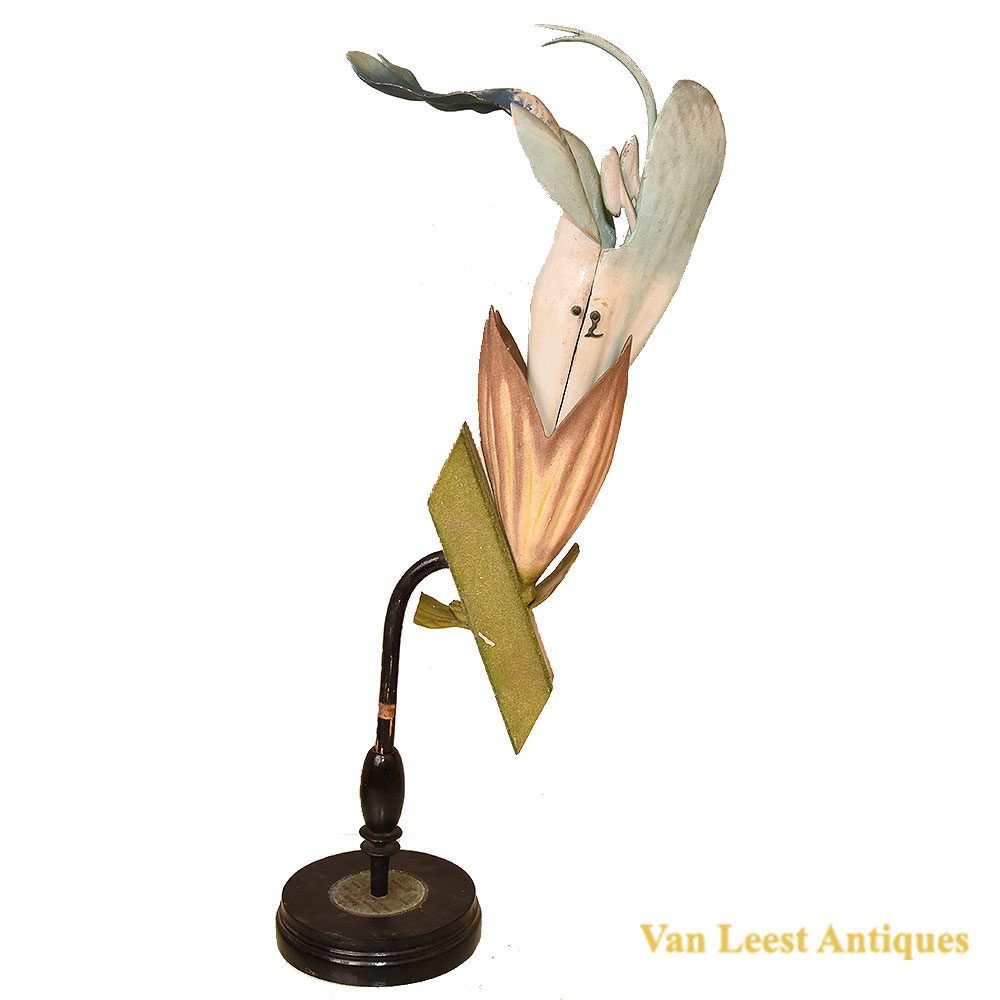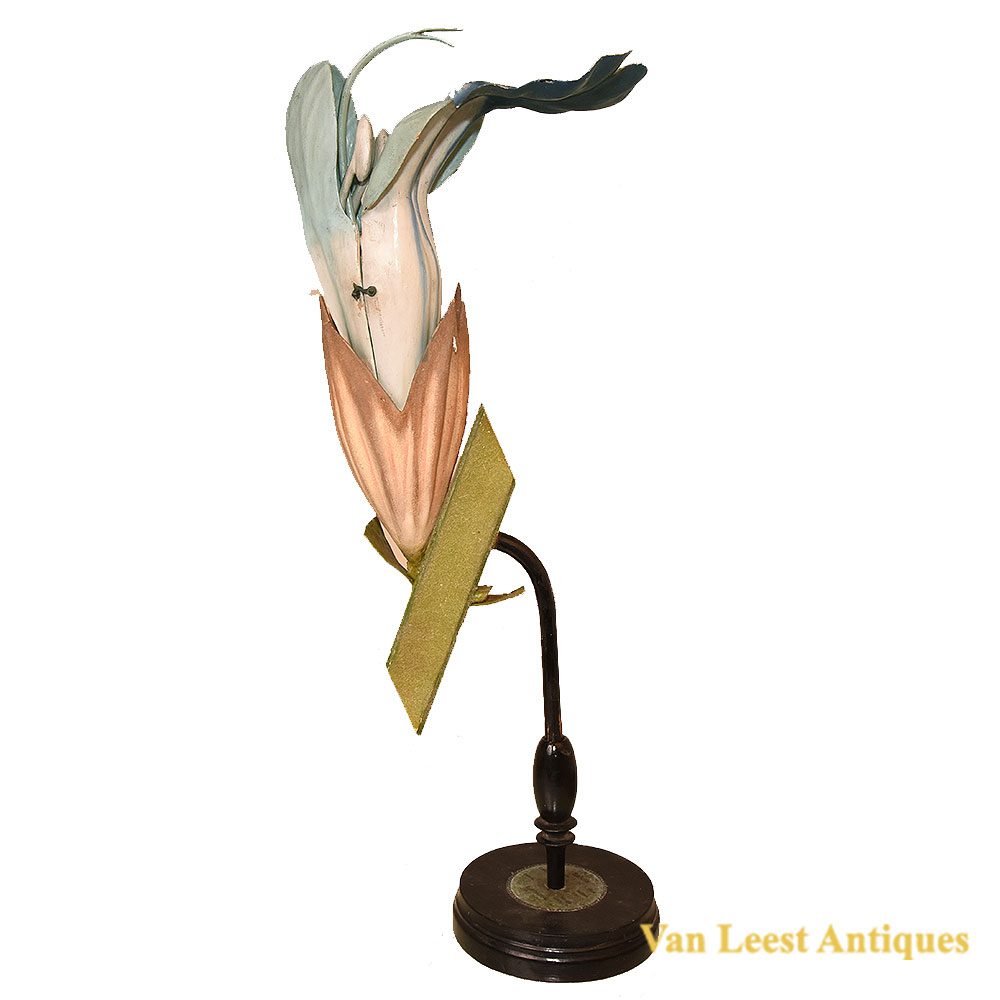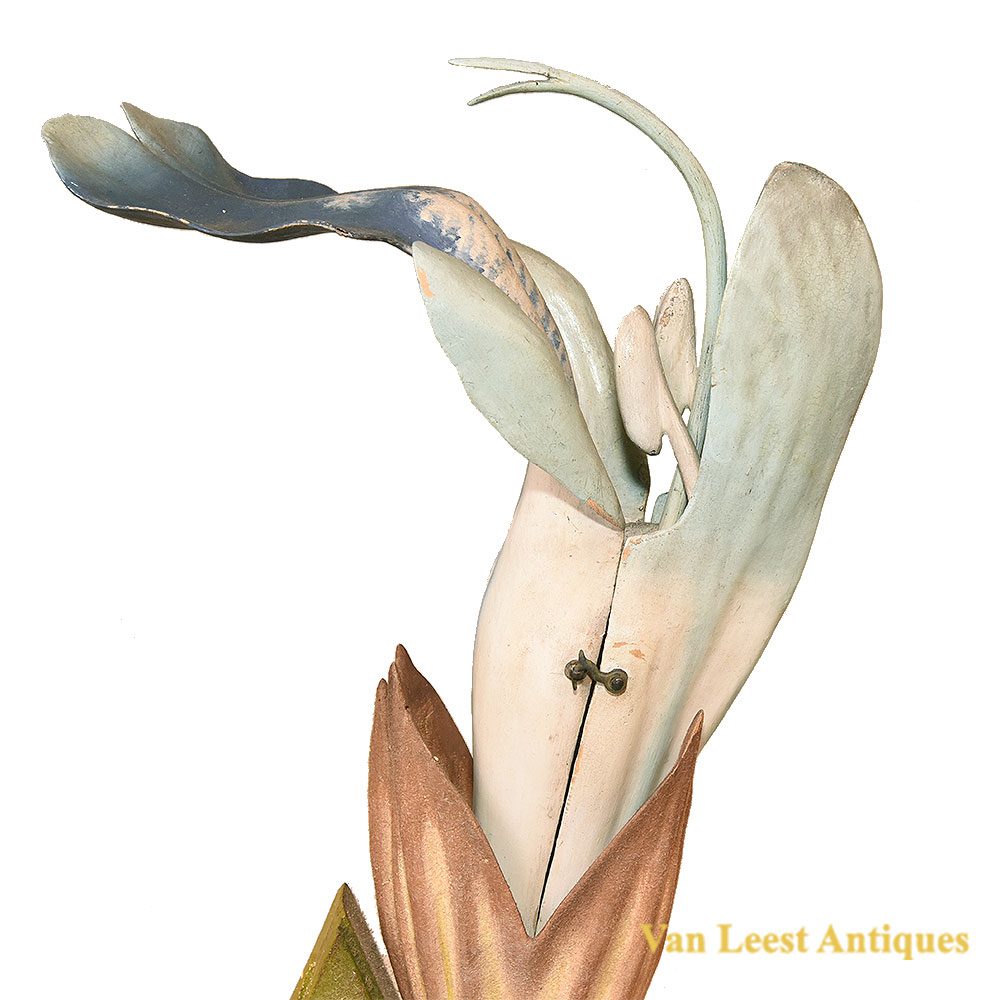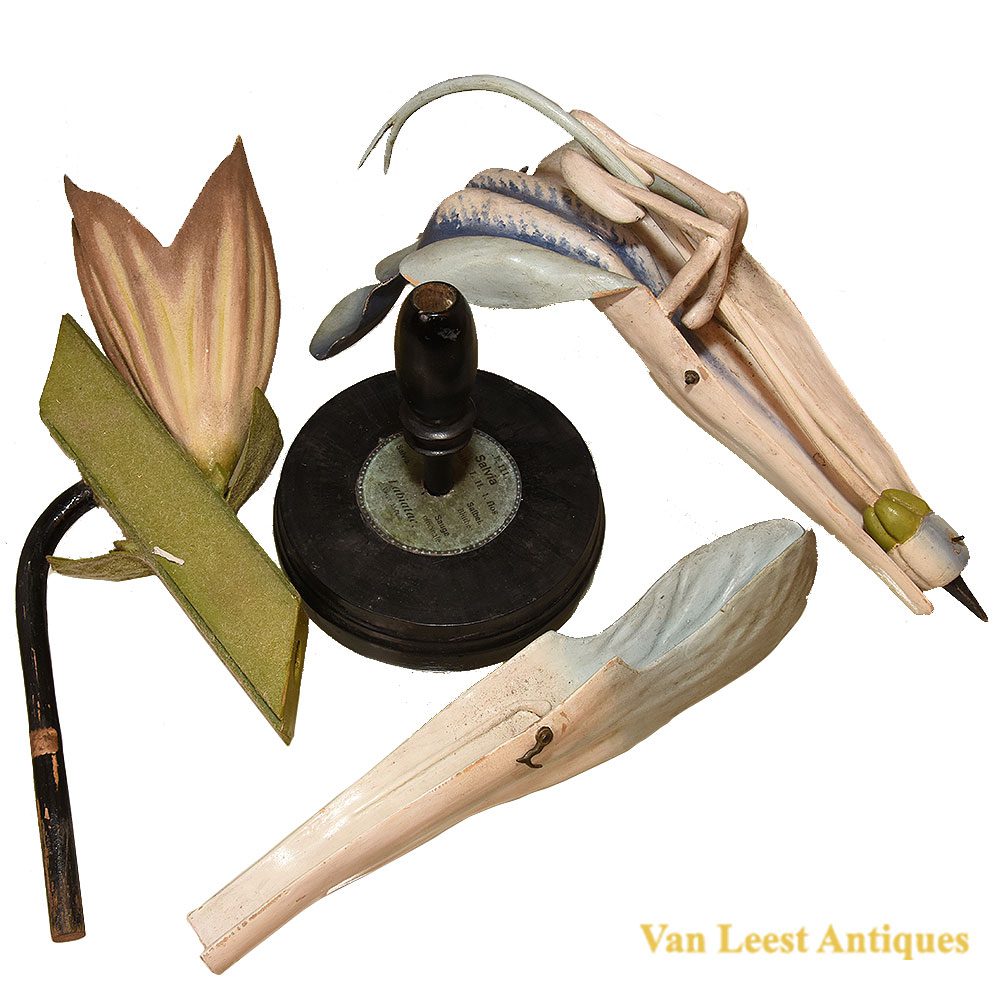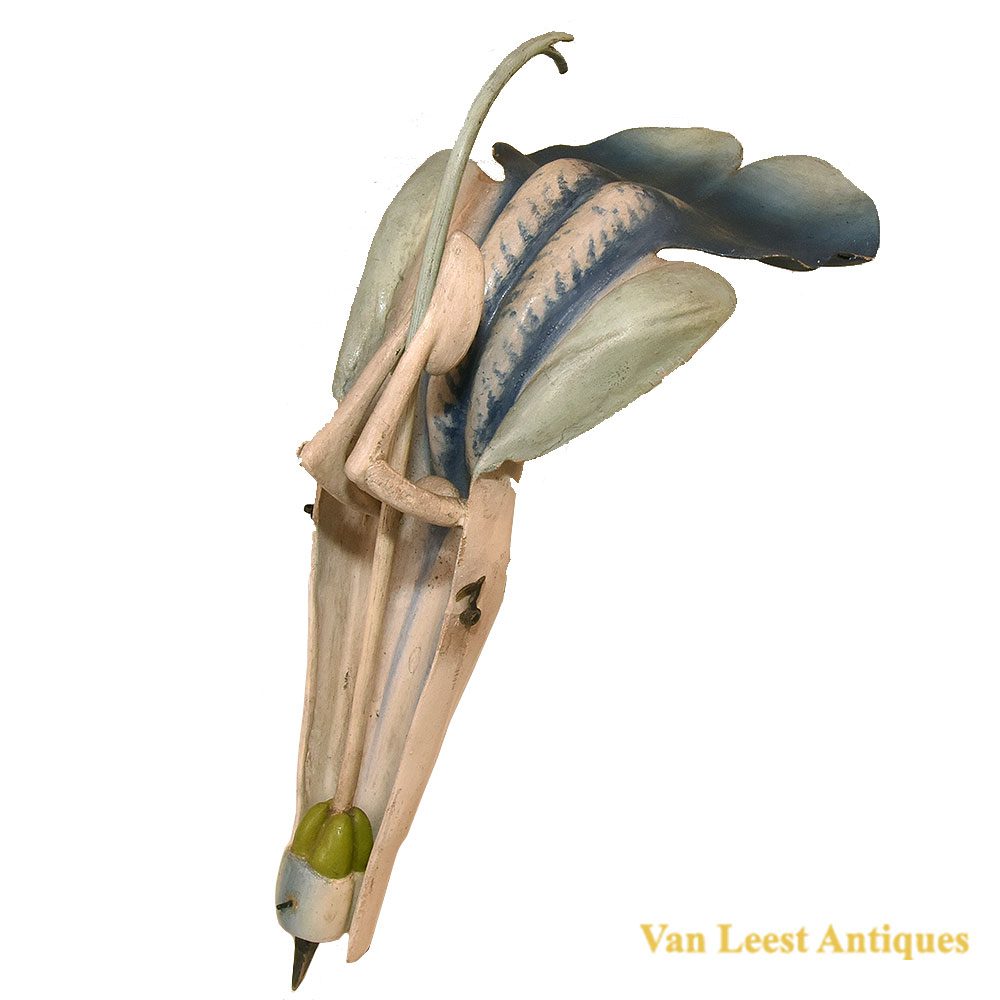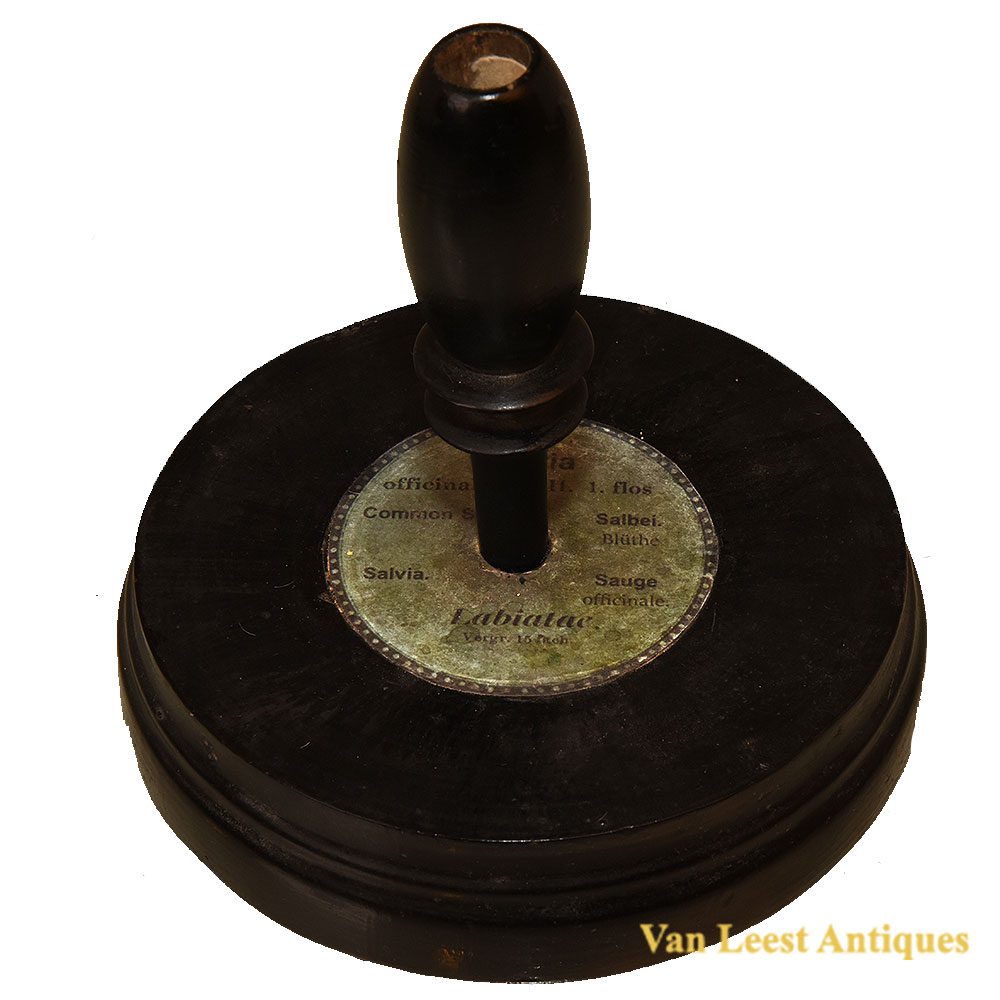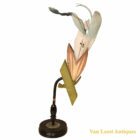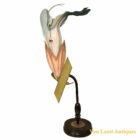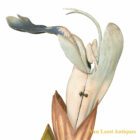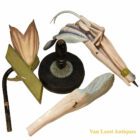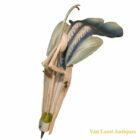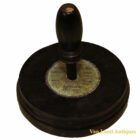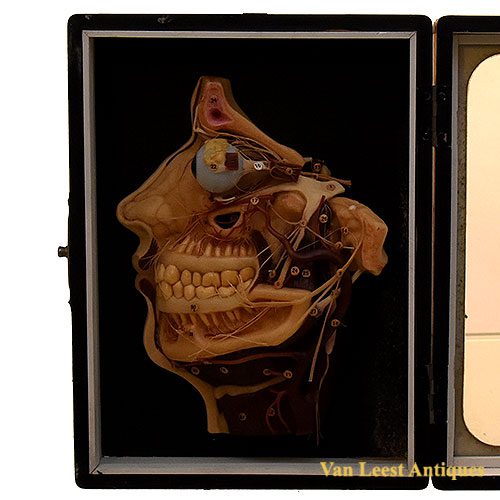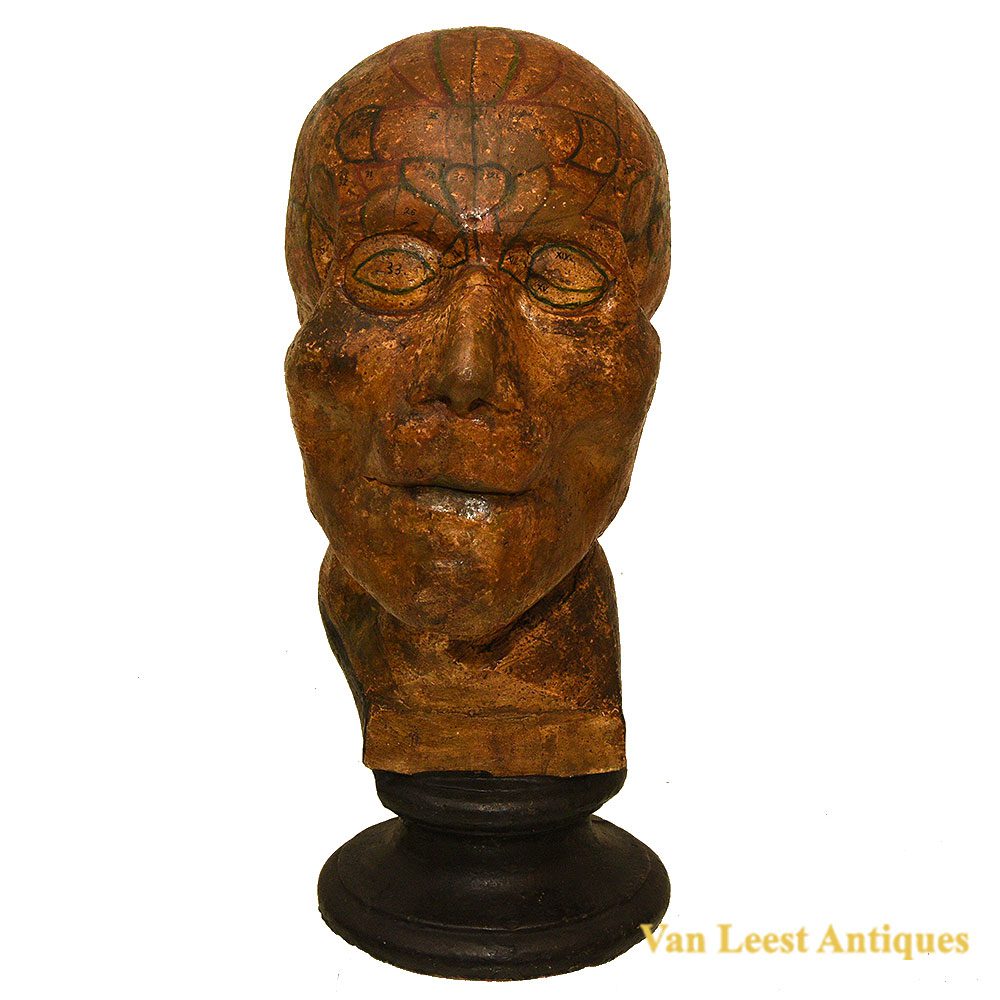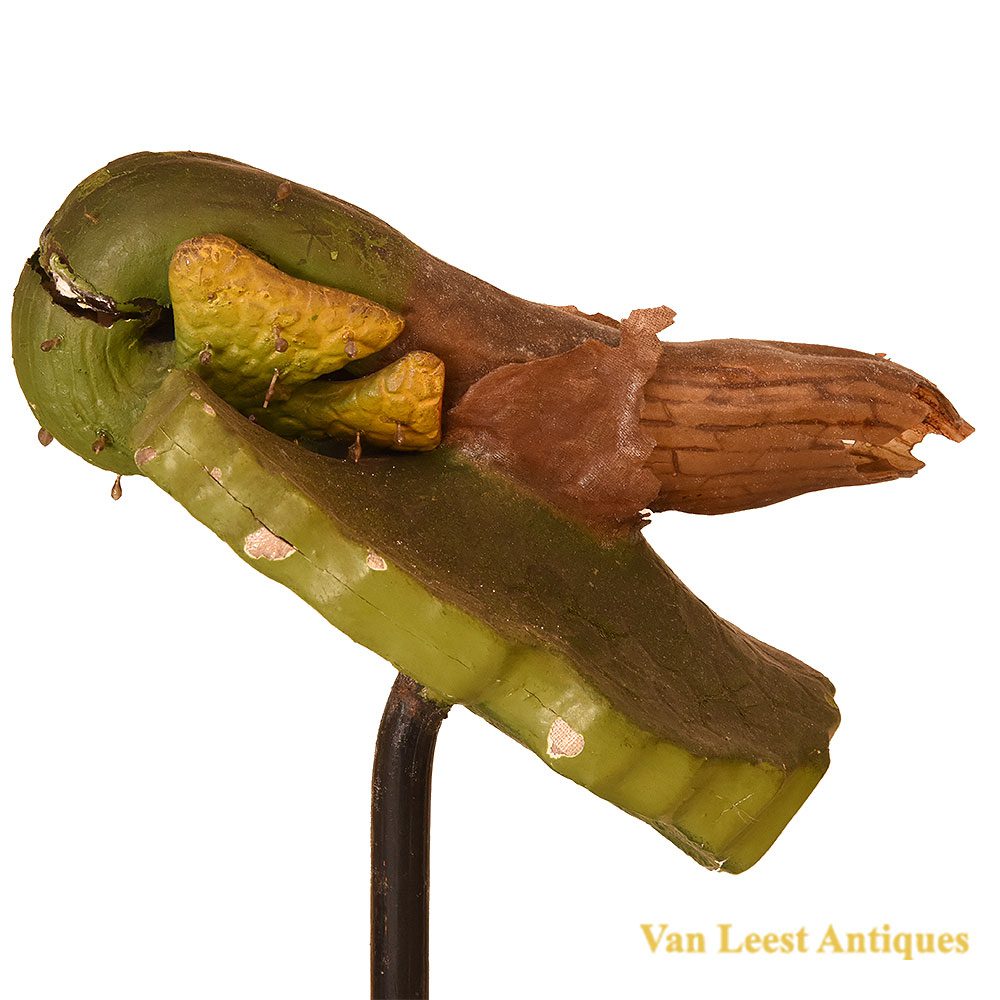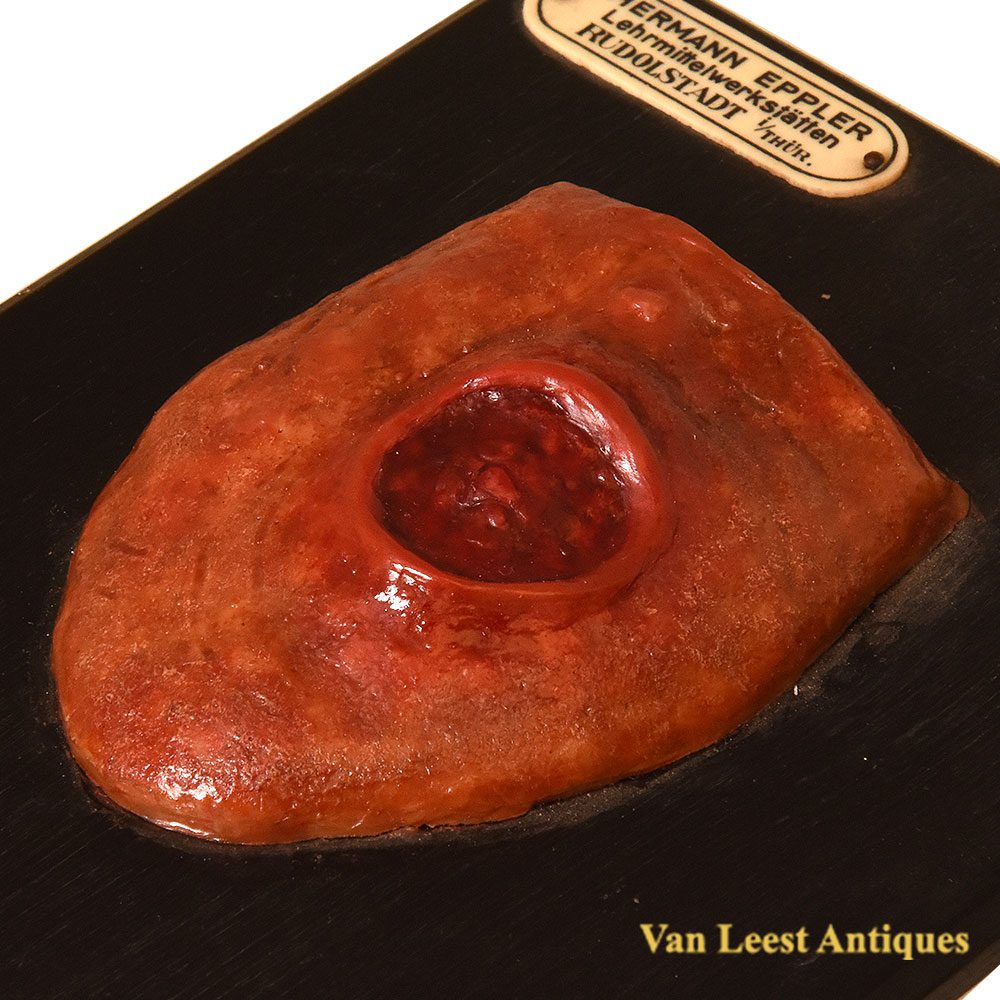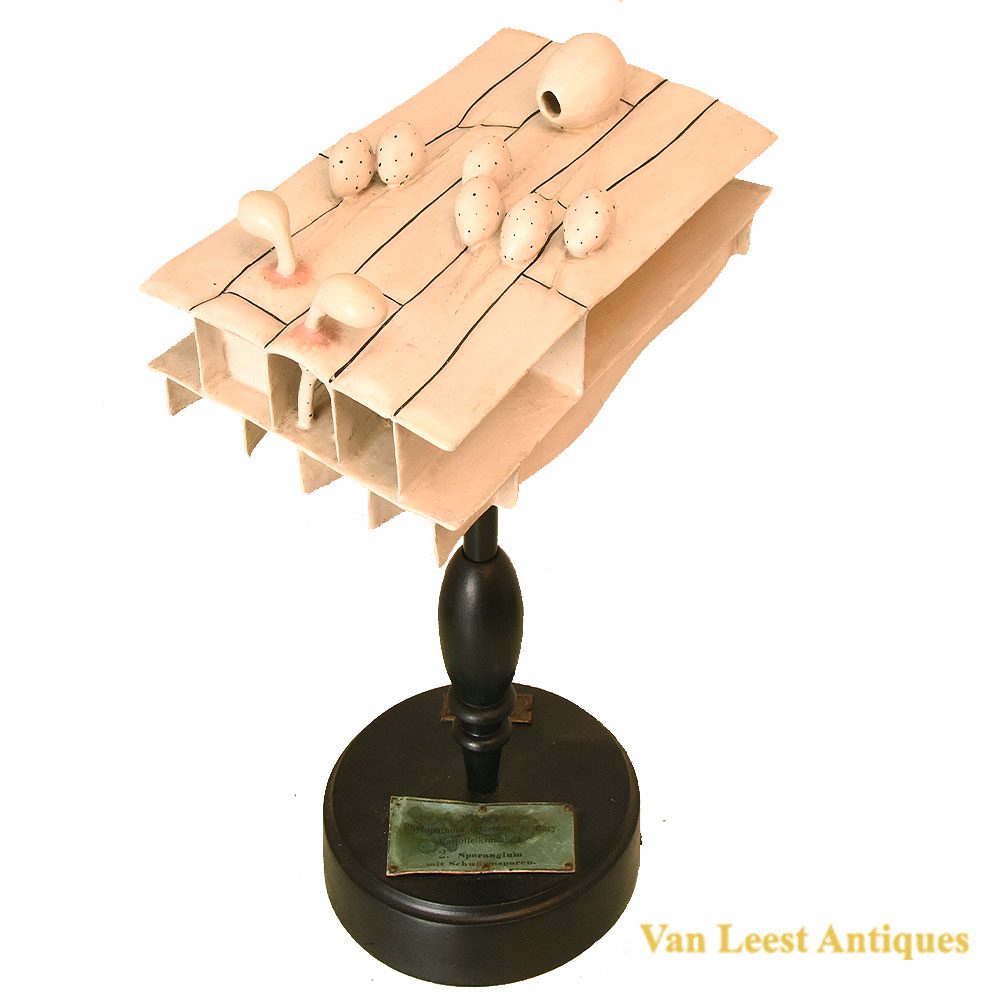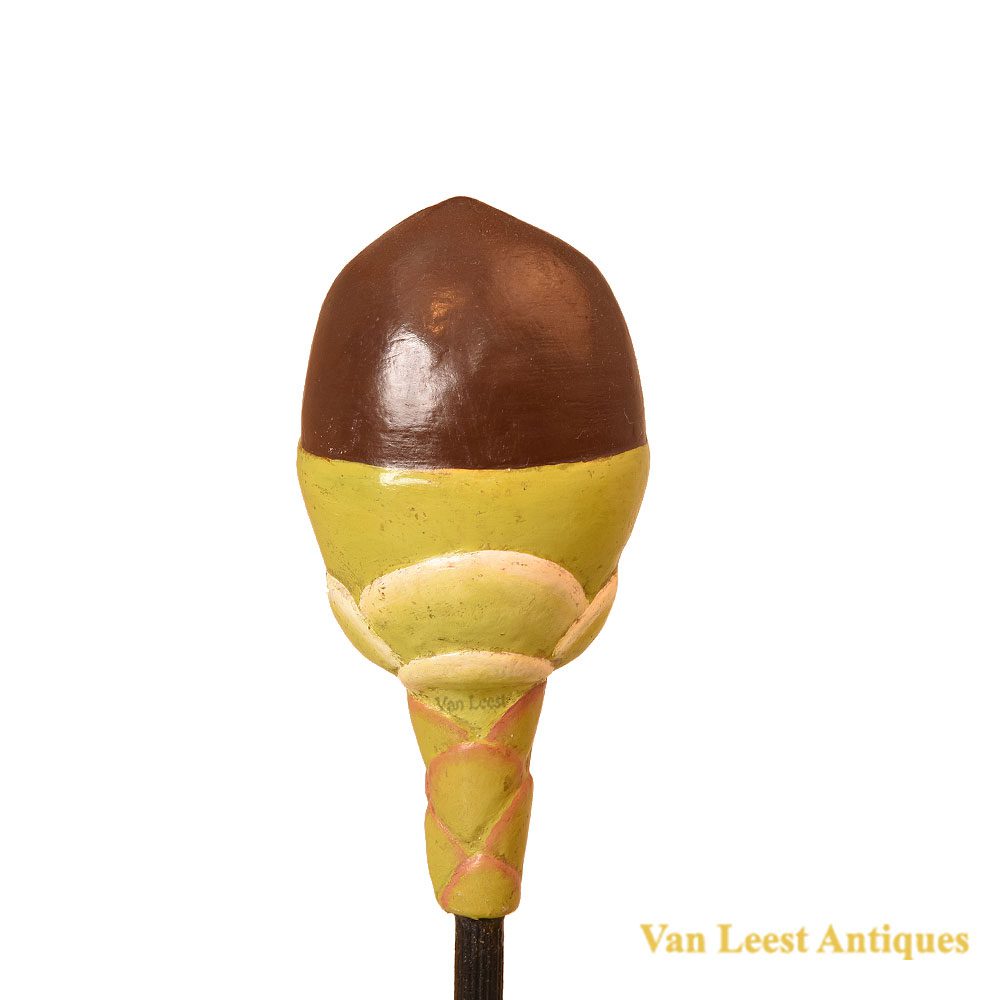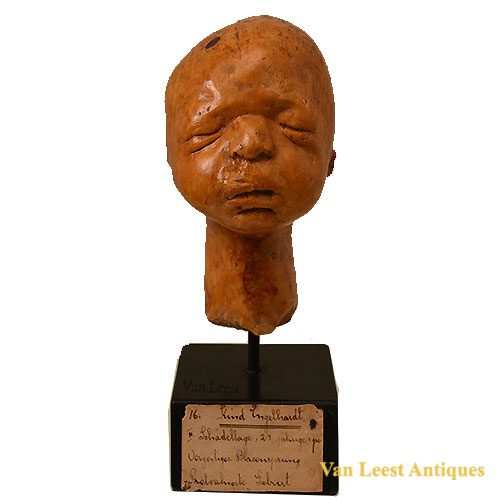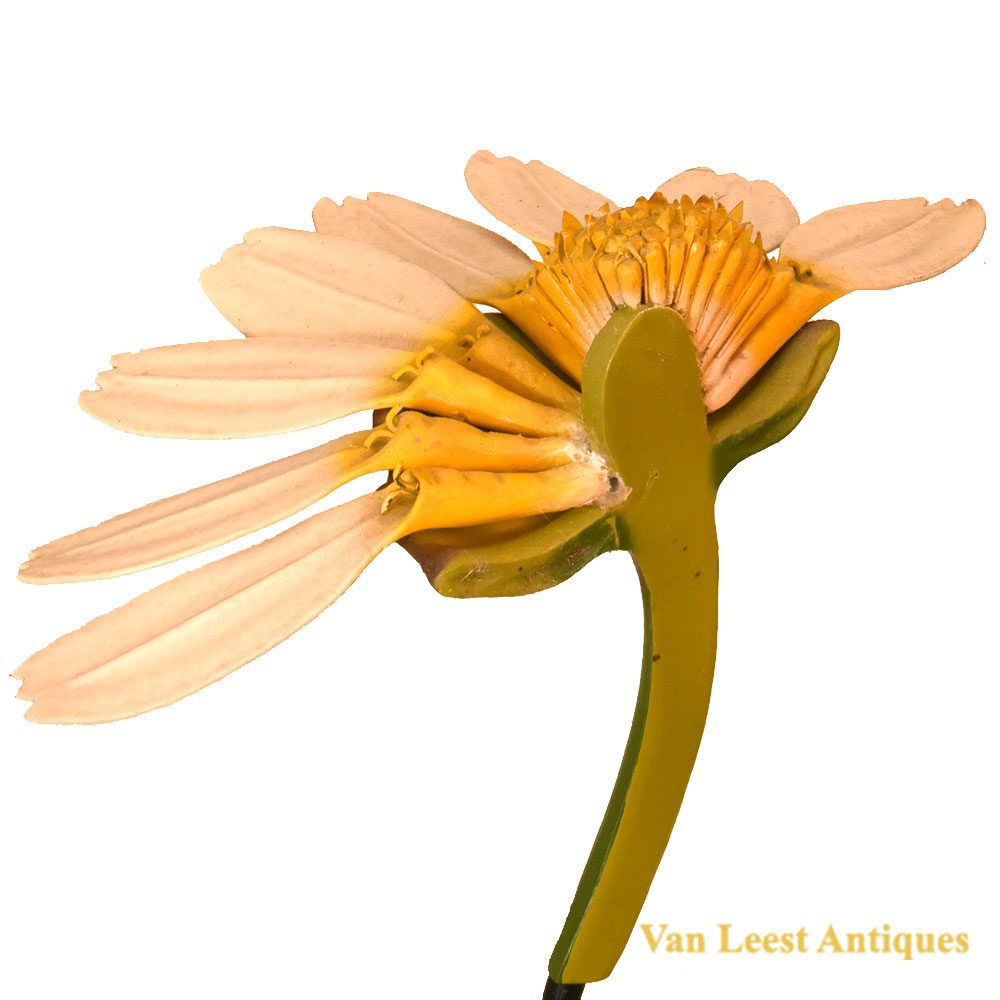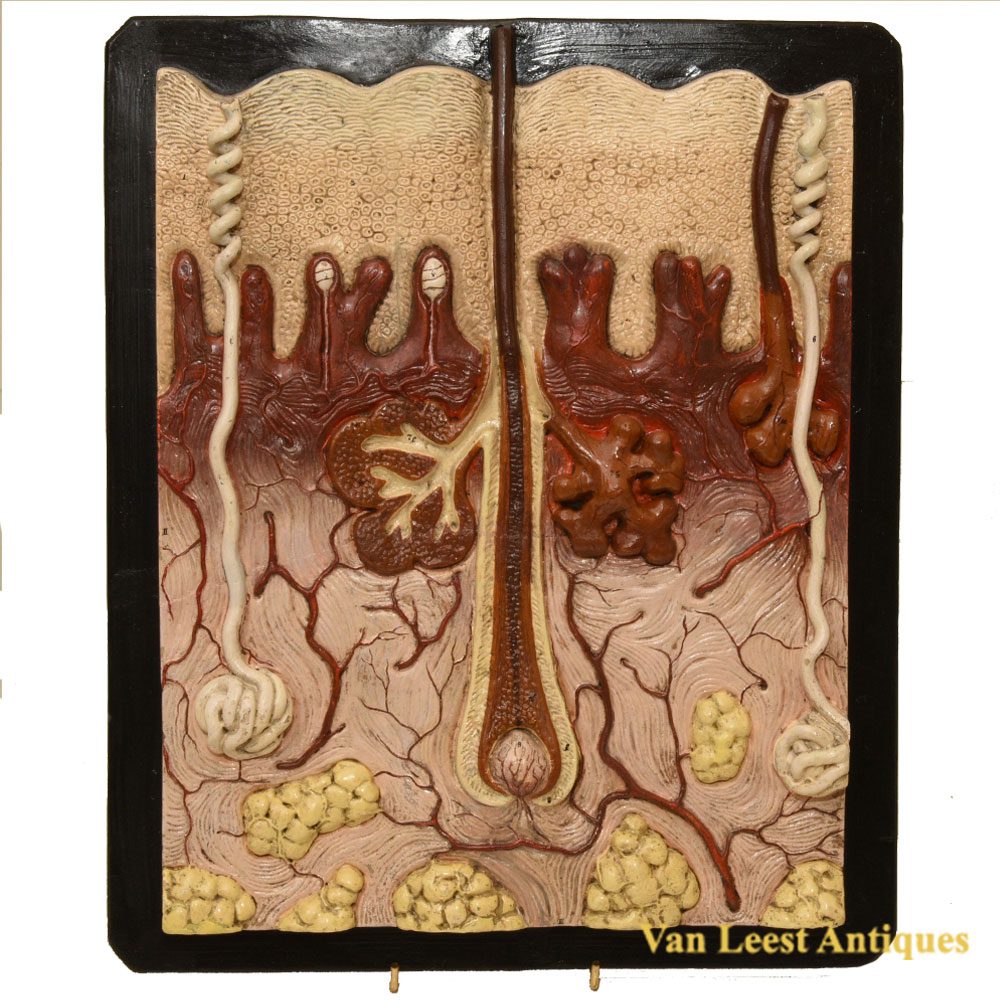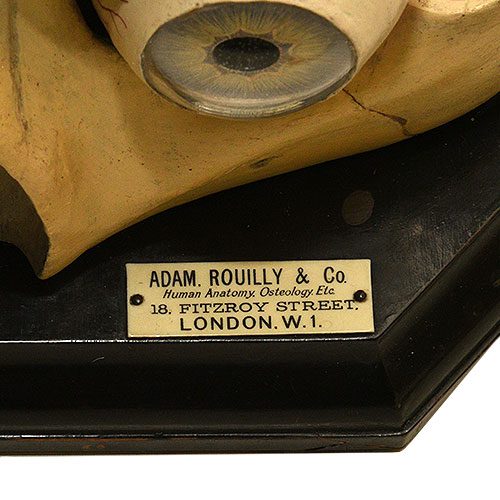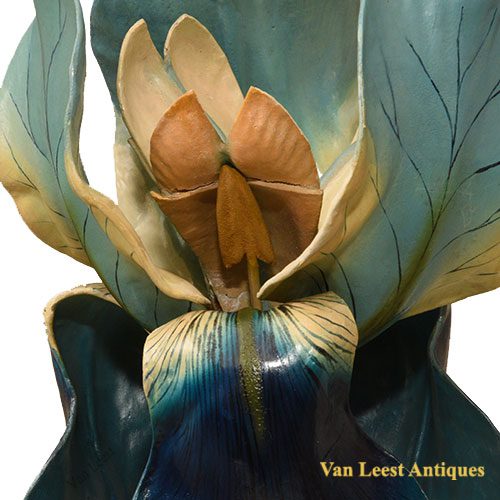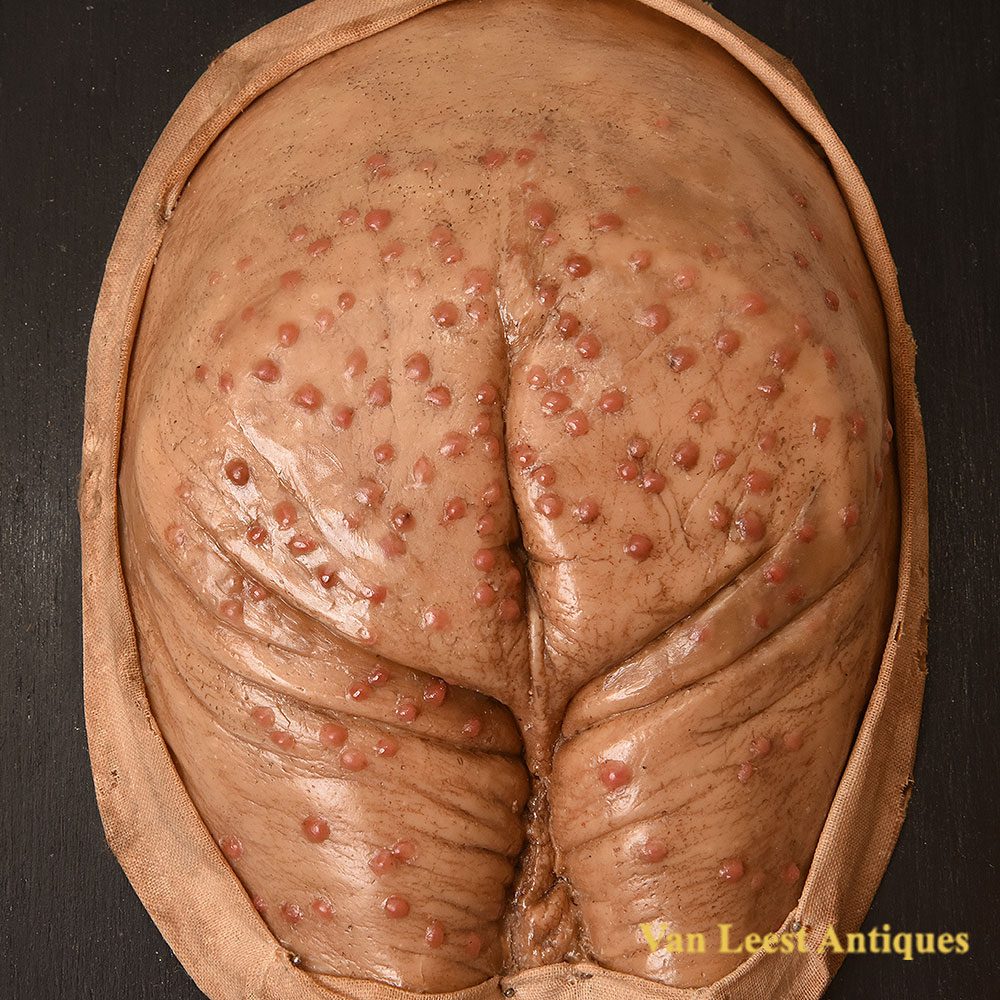Brendel Salvia flower model
Sold
The Salvia flower model consists of five handpainted papier mache removable parts which are 15 times enlarged. The pistil can be secured with a pin in the petal and between the stamens. The flower tissues are hold together by hooks. The reproductive organs together are placed in the flowerbase. A wooden stem leads to the ebonized decorated base, which has blue sticker. The sticker is marked: ‘No. 111 Salvia Officinalis. L. II 1. flos Commn Sage Salbei. Blüthe Salvia Sauge officinale. Labiatac Vergr. 15 fach.’
About Brendel models
The dismountable flower models for education were originally developed by the Breslau professor Julius Cohn (1828-1898). They were initially produced by C. Lohmeyer and were already exhibited in Amsterdam at the botanical congress in 1865. In 1866, Robert Brendel (ca. 1821-1898) from Breslau took over the production. He was succeeded by his son Reinhold Brendel (ca. 1861-1927). In 1896, the company moved to Berlin, and from 1902 to the nearby Grünewald, where it was known as ‘Verlagsanstalt für Lehrmittel’. Around 1922, the company was located in Neumarkt in Silesia. In 1866, there were thirty models to choose from, and by 1913, there were nearly 300. They mainly consist of flower models of higher plant species, allowing for a detailed study of their reproductive organs, as they were key for the classification of plants according to Linnaeus’ systematics. The models were developed in consultation with professors including Julius Cohn, Eduard Eidam, Alexander Tschirch, Leopold Kny, Carl Müller, Emerich Ratháy, Lajos Jurányi, and G. Höstermann. They are made of various materials, such as papier-mâché, wood, metal wire, and glass beads.
Related products
A German wax dissected model of the head, 1910
On applicationVasseur phrenology head, C 1880
On applicationBrendel botanical model male fern
On applicationEppler Anatomical Wax Model tongue
On applicationBrendel Taxus no 40 model
On applicationChamomile Brendel flower model
On applicationBock steger Skin model
On applicationEppler Anatomical Wax Model the measles
On application
